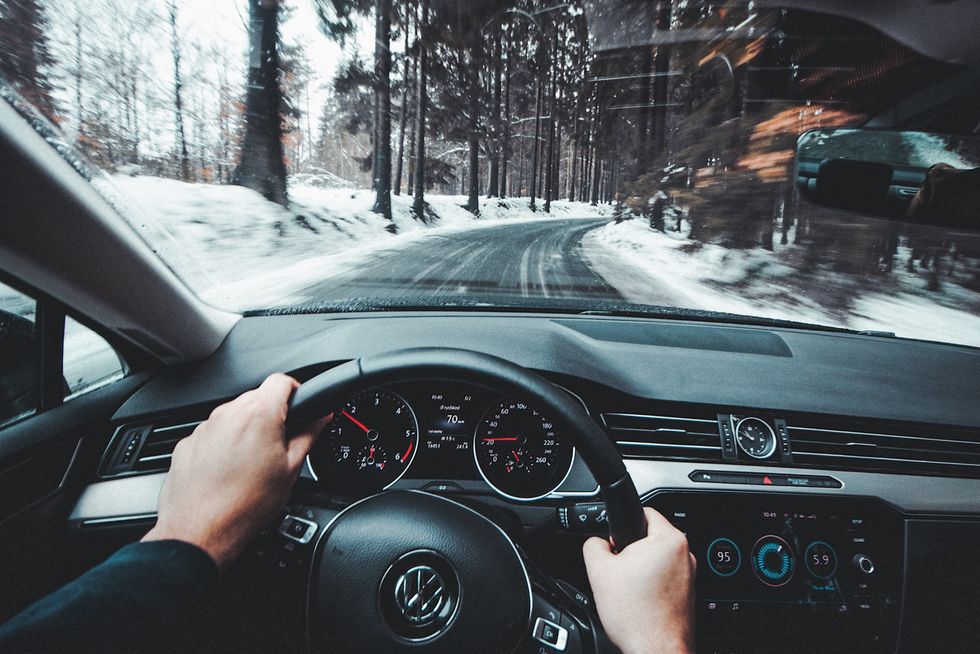With winter around the corner, it's time to think about how to care for your car. If you own a newer car, you're probably grateful it comes winterized from the factory, at least compared to what your parents drove.
Still, extreme cold is not fun to deal with — for humans or cars. Follow the car tune ups below to winterize your vehicle. Not only will it drive better, but it will prove reliable in the face of snow.
1. Swap in Antifreeze
Check your car to ensure you're running antifreeze and not water through the cooling system. The latter can freeze in cold climates, causing catastrophic damage. If you recently drove, allow your car to cool for several hours. Then, open the radiator and look at the liquid inside. If it's a brownish color, it's antifreeze.
If you're already using antifreeze, it needs to be replaced regularly to continue working as intended. It's recommended to flush and change the coolant every three years. If you don't have antifreeze, now is the time to empty your car's radiator and pour in the green stuff. Remember to keep antifreeze in a secure spot, as it can be toxic if consumed by children or pets.
2. Check Tire Pressure
Many popular manufacturers offer four-wheel drive, leading many drivers to believe it's necessary to traverse snow. However, the right set of tires can improve any car's grip. If you do a lot of driving on slippery roads, swap out your summer wheels for the all-weather variety.
Even if you don't get snow where you live, the changing temperatures can affect tire pressure. As it gets hold, the air condenses, leading to underinflated tires and reduced traction. If you plan to swap out your wheels, fill them to the correct pressure and check them frequently. The best place to find your car's specifications is in the manual. If your manual is AWOL, look on the edge of the driver's door. Here you'll often find a sticker with a variety of essential information.
3. Change Your Oil
After a summer of hard-driving, sludge and buildup can impact your engine's performance. It's best to put in fresh oil when the seasons change, and if you live somewhere it gets cold you'll want to check to see whether your manufacturer recommends running thinner oil during the winter to account for the way things gum up in colder weather. Always make sure to change your oil filter when you put fresh oil in the car.
4. Replace Wiper Blades
Have you ever been caught in a storm while driving with worn-out wiper blades? You might as well be swimming down the road without goggles. Failing to replace wipers can cause serious safety risks. It's crucial to ensure you install a fresh set before winter because you don't want to it in the middle of a deluge.
Typically, your local oil change shop will check on the status of your wipers when you bring the car in for a service. You can also ask for a free check-up at any local auto parts store. Before you buy, make sure they fit your vehicle's make and model.
5. Test Your Battery
Car batteries can die in cold weather. If you have a beater with a five-year-old battery, don't get stranded on the side of the road. Cold temperatures reduce cranking power and thicken oil, making it hard to turn the engine over. Instead, invest in a new battery that will power through the snow.
Use a battery tester to determine if your battery has any life left. You can also use a charger to prolong the life of the one you're using. Eventually, however, it will wear out.
6. Inspect the Brakes
Sliding into a snowbank is something no one wants to experience. If you lose traction, you don't want a car that pulls unpredictably to one side. Predictable handling prevents a situation where you have to swerve. It's essential to have your brakes and alignment checked going into winter to ensure maximum safety.
The alignment on your car will determine whether it pulls to one side or another without any steering input. Brakes are a little more complicated, as they can be misadjusted and lead to tramlining, pulling in one direction when you stop quickly. Need your brakes and alignment checked? Knock both off your to-do list at once with a trusted mechanic. If you're handy, you can do the work yourself.
7. Have a Cold-Weather Emergency Kit
It's always good to have some basic first-aid supplies and a few snacks in your car, but getting stranded is just more likely when the weather's nasty. Be sure to add a space blanket, warm clothes, hand-warmers, a windshield scraper and snow brush, possibly a lightweight shovel and traction mat to dig yourself out and flares. It might sound like overkill, but it could get you out of a pinch!
8. Tighten the Nut Behind the Wheel
An old saying for racers is true for winter driving. The best upgrade you can make is to tighten the nut behind the wheel. In other words, you. If you frequently drive in inclement weather, brushing up on your car control skills is a good idea.
Consider attending a car school or on-road driver's safety course to learn how to handle a braking skid or hydroplane. The more you practice adverse situations, the easier you'll be able to tackle them in real life.
Do you have experience driving in cold climates? If so, how do you prepare your cars for winter? Do you have a handy trick to pass along? Share your tips with the readers by dropping a comment into the section below. We'd love to know your secrets.









































